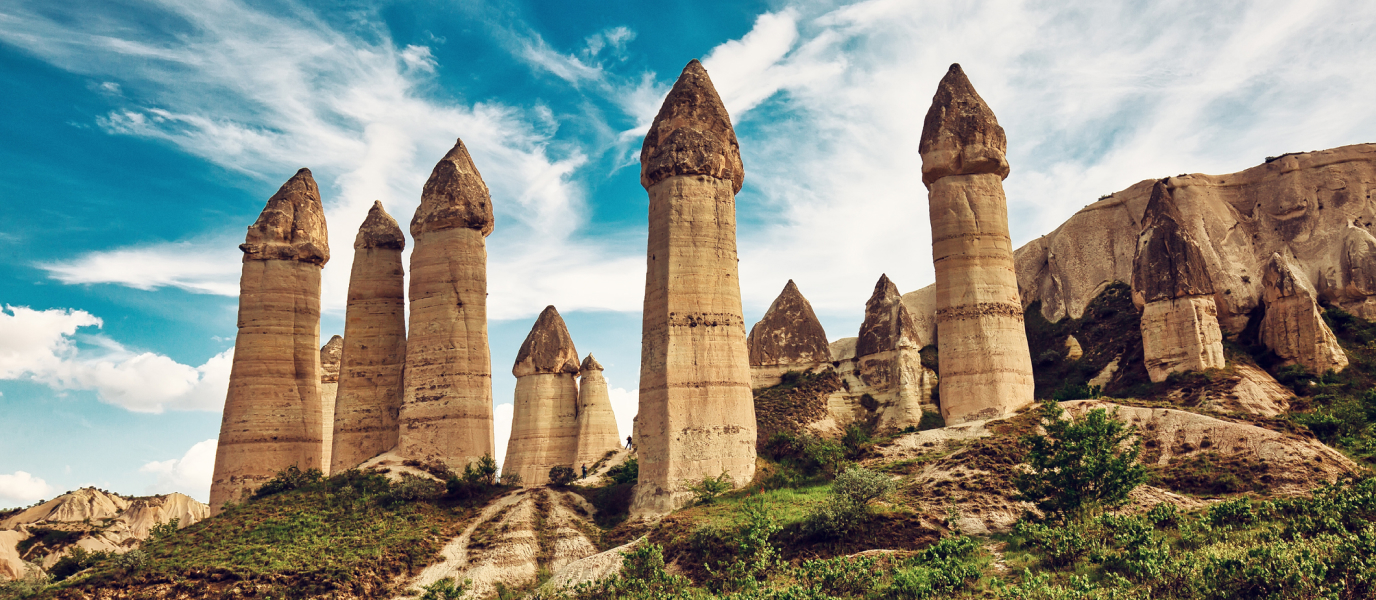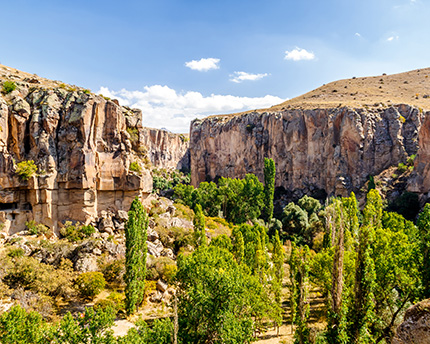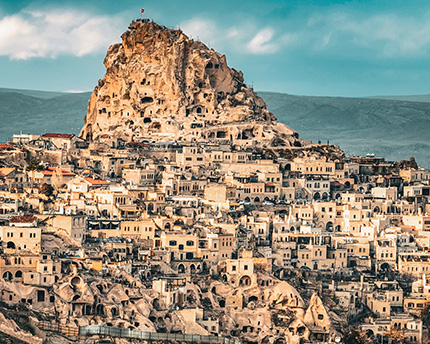Cappadocia is one of the most famous areas on the planet where you will see the curious geological formations of the fairy chimneys. They are large rock columns in which the shaft material is much softer than the dome and has been worn away by erosion and age to form curious shapes reminiscent of the chimneys of fairy tale houses with a triangle-shaped cap at the top, where the material is much harder.
About the Fairy Chimneys
The fairy chimneys are one of the most famous and characteristic geological landscapes in Cappadocia. The origin of these curious formations lies in the volcanic eruptions of Mounts Erciyes, Hasan and Göllü, which covered the region millions of years ago with a thick ash that eventually solidified into a kind of soft rock called tuff.
The natural erosion of the wind and water has gradually worn away the shaft of these enormous elongated rocks, i.e. the softest part; while, in the dome, the stone was harder and has ended up taking on the shape of a cap, reminiscent of the chimneys of fairy tale houses, i.e. of the famous fairies who now populate every corner of Cappadocia.
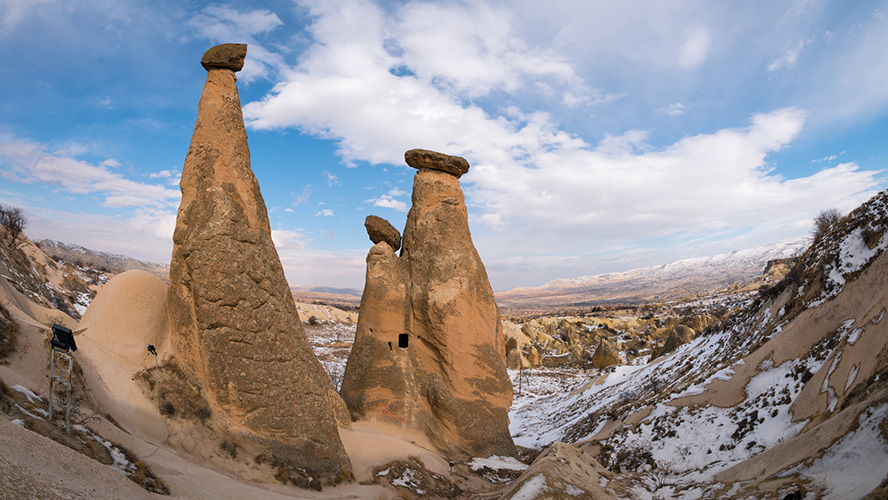
Some of these rock formations are up to 40 metres high and several metres wide. In fact, the tuff and the fact that it can be easily drilled was one of the reasons that led many inhabitants of this region to create shelters and houses inside these rocks to protect themselves from enemy invasions.
In this land of volcanic origin, many materials have been melted and mixed to form these chimneys so that, at sunrise or sunset, when the light changes, these enormous sculptures present different colours in a unique spectacle.
Best places to see the Fairy Chimneys in Cappadocia
Although the famous fairy chimneys can be found in many places in the Cappadocia region, the three best spots to enjoy these magical formations are Love Valley, Pasabag and Red Valley.
One of the most popular places to enjoy this incredible landscape so characteristic of Turkey is Pasabag, which is located between the towns of Göreme and Avanos.
This valley is also known as Monks Valley because many of the fairy chimneys, with up to two and three formations emerging from the same trunk, were carved by the monks to build their chapels and the prayer and rest areas. Some of its churches and halls are still in very good condition and can be visited.
This is not the only place where you can enjoy this almost lunar landscape. In Love Valley, what some people imagine as fairy chimneys, others see a more phallic element that has ended up giving its name to this area.
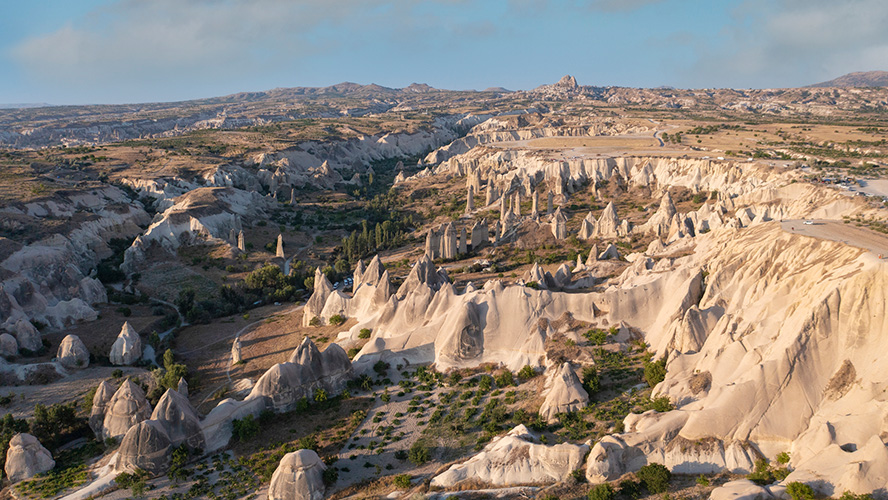
The number of these rock formations is also very significant, and the sunsets from this area are incredible because of the play of light and shadows cast by these stone sculptures.
The last village where you can enjoy a significant group of fairy chimneys is in Red Valley, where the colour of the slightly reddish earth gives its name to the whole canyon.
There you can also see rock-hewn churches and dwellings leading from some of these shafts whose lower part is extremely soft and can even be marked with a finger.
Red Valley is near Uçhisar, where you can visit one of Cappadocia’s main castles on a hill at one of the highest points in the region.
Its role in history
As stated above, the fairy chimneys are a geological formation that originates from a volcanic land where several eruptions took place and filled the surrounding area with tuff. Rocks with similar shapes and erosion processes can be seen in the USA and Jordan. However, what makes these Cappadocian chimneys unique is the role they played in history and the role their inhabitants played in the construction of this landscape.
Cappadocia was one of the areas to which many early Christians fled during the persecution of the Christians in the Roman Empire. Göreme became a place of pilgrimage for those who feared death by crucifixion for their faith and found that the shafts of these fairy chimneys were malleable places where they could build their inner shelters and protect themselves from their persecutors.
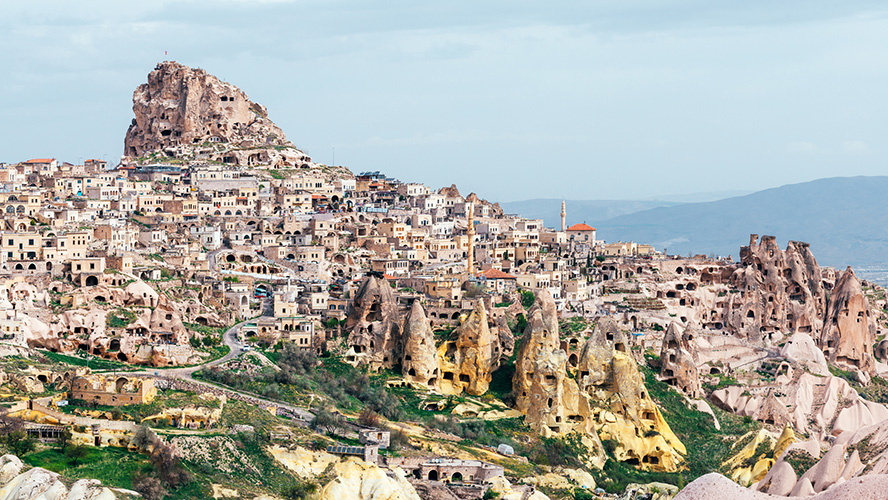
This system of caves, houses and stables eventually resulted in entire cities built underground, up to 20 levels deep, but also with many churches, monasteries, chapels and shelters inside the same rocks that now form the famous fairy chimneys.
In this way, frescoes from early Christian Byzantine churches of great artistic and historical value have been preserved.
These cave houses were inhabited until 1950, when the Turkish government decided to relocate the families still living inside the rocks for fear of landslides and misfortune.




































































